Associate professor
University of Tuzla, Department of Mathematics
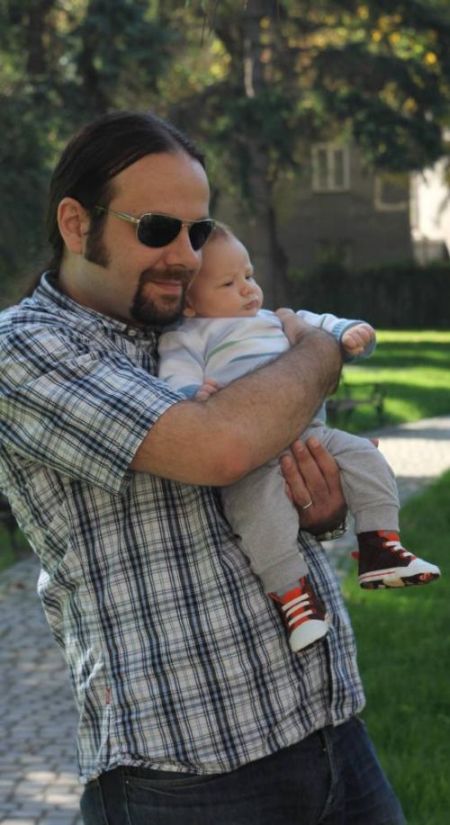
I was born in Tuzla, Bosnia and Herzegovina, where I finished primary and secondary education. I successfully participated in several mathematical competitions, including participating at the 36th International Mathematical Olympiad in Toronto, Canada in 1995.
I obtained my MMath degree in Mathematics with Computer Science from the University of Sussex at the School of Mathematical Sciences in 2001 having successfully defended my thesis entitled Differential Equations with Periodic Coefficients. I received several prizes during my studies and received a special mention by the Vice-Chancellor at the graduation ceremony.
I obtained my PhD degree from the University of Bath in 2009, under the supervision of Dmitri Vassiliev, having successfully defended my thesis entitled New Vacuum Solutions for Quadratic Metric-affine Gravity. My examiners were Prof. Friedrich Hehl and Prof. Jerry Griffiths.
In 2001 I returned to my native country and city, which caused quite a stir at the time and started working at the Department of Mathematics of the University of Tuzla.
After my PhD studies, I once again returned to Tuzla. In 2009 I was named assistant professor in the field of pure mathematics, while since 2016 I hold the position of associate professor.
My main areas of research are operator theory and theories of gravity, but I have also published work in functional analysis and numerical analysis.
I teach a variety of courses at the Department of Mathematics, as well as the Faculty of Electrical Engineering and the Faculty of Economics.
I am married and a proud father of a boy.
University of Tuzla, Department of Mathematics
University of Tuzla, Department of Mathematics
University of Tuzla, Department of Mathematics
University of Bath, Department of Mathematics
University of Tuzla, Department of Mathematics
Doctor of Philosophy, Mathematical Sciences
University of Bath, United Kingdom
Master of Mathematics
University of Sussex, United Kingdom

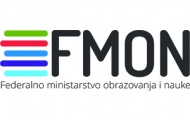





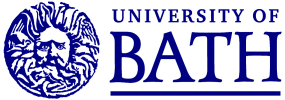




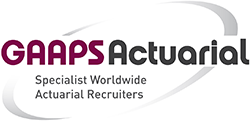



My research interests can be broadly described as analysis of partial differential equations and spectral analysis, as well as alternative theories of gravity, which was the theme of my PhD thesis, New Vacuum Solutions for Quadratic Metric-affine Gravity.
My current research primarily deals with the massless Dirac operator, and its spectral analysis.
I have also published work in the fields of functional analysis and numerical analysis.
Professor Vassiliev, or Dima, is simply the best man I ever worked with. I am proud to call him my friend as well. He is a professor at the University College London.
+ FollowElvis is my PhD student, in the process of finishing his doctoral thesis at the University of Tuzla.
+ Follow
Original title: "Primjena diferencijalne geometrije u ispitivanju Diracovog operatora bez mase". Cofinanced by the Ministry of education and Science of FBiH 2015.

Original title : "Diracov operator bez mase u teorijama gravitacije i spektralnoj analizi". Cofinanced by the Ministry of education and Science of FBiH 2014.

Original title of project: "Alternativne teorije gravitacije i analiza generisanih sistema nelinearnih parcijalnih diferencijalnih jednačina". Cofinanced by the Ministry of education and Science of FBiH 2012-13.

This project was the first EU TEMPUS project, where the project leader was from Bosnia and Herzegovina. This project made possible the first doctoral studies course on the University of Tuzla.
The main goals of our project, funded by European Commission under the TEMPUS IV first call, are the development of a model of structured doctoral studies in Mathematical Sciences involving the network of Western Balkans universities, the establishment of doctoral curricula design in the areas of Pure Mathematics, Applied Mathematics and Theoretical Computer Science and the first phase of its implementation. The supporting activities include building a strategy to train the next generation of mathematics professors at Western Balkans universities for the research-based education and student-centered learning; the strengthening of master programs from the standpoint of learning outcomes and labor market/link to the third cycle dichotomy - pilot cases in Mathematical modeling and Financial mathematics; the improvement of IT and library facilities; effective and efficient management of the JP, dissemination of the approach to ensure sustainability of objectives after completion of the project, and raised quality assurance procedures.
The Western Balkan countries represented in this project, Albania, Bosnia and Herzegovina, FYR Macedonia, Serbia and Montenegro officially joined the Bologna process in 2003. The partner univerities from Western Balkan countries in the project are: Universities of Sarajevo, Banja Luka and Tuzla, University of Belgrade, University of Montenegro, Ss. Cyril and Methodius University of Skopje and University Luigj Gurakuqi of Shkodra, and the EU partners are Karl Franzens University of Graz, Sofia University, the Faculty of Mathematics and Informatics, the Institute of Mathematics and Informatics of the Bulgarian Academy of Sciences and the Mathematical Society of Southeastern Europe MASSEE.
The focal point is the development of structured doctoral studies as the third Bologna cycle of higher education through networking partner universities in a way that overcomes fragmentation and foster the reciprocal development of human resources.
The development of the project will be during three years and through three phases. During the first phase, labeled as Doctoral Program structure and Core Knowledge (the initializing curricula development phase), a scholarly representative Academic Board of 10 experts was formed in Graz, June 22-29,2009, embracing task forces for pure mathematics, applied mathematics and theoretical computer science. Among the activities during the first year were the Workshop in Graz "Training in Use of IT in Mathematical Modeling" September 7-11, 2009 and Young Researchers Workshop in Ohrid, September 16-20, 2009 (as a part of MICOM International Congress on Mathematics).
Academic Board finalized the recommendations on the core knowledges in pure mathematics, applied mathematics and theoretical computer science at its meeting in Sofia, September, 22-24, 2009. The above recommendations were discussed at the Workshop on PhD Core Subjects and Quality Assurance in Tuzla, November, 04-08, 2009. There was decided which parts of the core knowledges are to be covered by six quality standard setting courses to be held during the SEE Doctoral Year in Mathematical Sciences 2011 (3rd project year).
During the second phase, entitled Curricula Design and Capacity Building, the syllabi for the six core courses will be finalized by the Academic Board by mid March 2010. A characteristic feature of the whole Year 2 will be the impact on systematic development of human resources. The Workshop on harmonized PhD program, to be held in Belgrade in June 2010, will mark the whole process of activities on institutional approval. The agreed model of SEE Doctoral Studies in Mathematical Sciences and the PhD curricula will be aproved at all WB partner institutions by the end of October - mid of November 2010. Three events will provide examples of good practice related to the link between master and doctoral education. Intensive course and lab in Mathematical modelling will take place in Shkodra in July, followed by an Intensive course in Financial mathematics in August at the University of Banja Luka. The summer school and the workshop on Mathematical Modelling of Cancer Growth and Treatment form Event 4 in FP7 Marie Curie Training Series BioMedMath centrally organized by our consortium member - Institute for Mathematics and Scientific Computing, University of Graz.
The third project year, SEE Doctoral Year in Mathematical Sciences 2011, will be an important part of 2011: Year of Mathematics in South-Eastern Europe, proclaimed by MASSEE. There will be six joint, intensive four-week courses, designed on recommendations of the Academic Board that have been based on the analysis of the state of the art in mathematical research in South-East Europe. Universities of Sarajevo, Belgrade, Tuzla, Podgorica, Skopje, and Sofia will host the doctoral ground level courses in Number Theory, Dynamical Systems, Probability and Statistics, Optimization, Data Structures and High Performance Computing, Computability and Complexity. These courses are thought to provide a firm starting core knowledge background for PhD students aiming at doctoral research in a discipline/subdiscipline falling within global areas of pure and applied mathematics and theoretical computer science.
At the Final Review meeting in December 2011 in Sarajevo, the Consortium Committee will analyze overall results of the project and the course of post TEMPUS funding actions recommended by the Sustainability plan.

Original title : "Istraživanja u teoriji nelinearnih operatora s primjenom u teorijskoj fizici i rječavanju nekih operatorskih jednačina". Cofinanced by the Ministry of education and Science of FBiH 2008-2009.

Original title : "Nelinearni operatori u težinskim prostorima funkcija prirodnog argumenta i primjene". Cofinanced by the Ministry of education, science, culture and sport of the Tuzla Canton 2005.
A classical pp-wave is a four-dimensional Lorentzian spacetime which admits a nonvanishing parallel spinor field; here the connection is assumed to be Levi-Civita. We generalize this definition to metric compatible spacetimes with torsion and describe basic properties of such spacetimes. We use our generalized pp-waves for constructing new explicit vacuum solutions of quadratic metric-affine gravity.
In this paper we deal with quadratic metric-affine gravity, which we briefly introduce, explain and give historical and physical reasons for using this particular theory of gravity. We then introduce a generalisation of well known spacetimes, namely pp-waves. A classical pp-wave is a 4-dimensional Lorentzian spacetime which admits a nonvanishing parallel spinor field; here the connection is assumed to be Levi-Civita. This definition was generalised in our previous work to metric compatible spacetimes with torsion and used to construct new explicit vacuum solutions of quadratic metric-affine gravity, namely generalised pp-waves of parallel Ricci curvature. The physical interpretation of these solutions we propose in this article is that they represent a conformally invariant metric-affine model for a massless elementary particle. We give a comparison with the classical model describing the interaction of gravitational and massless neutrino fields, namely Einstein-Weyl theory and construct pp-wave type solutions of this theory. We point out that generalised pp-waves of parallel Ricci curvature are very similar to pp-wave type solutions of the Einstein-Weyl model and therefore propose that our generalised pp-waves of parallel Ricci curvature represent a metric-affine model for the massless neutrino.
The approach of metric-affine gravity initially distinguishes it from Einstein's general relativity. Using an independent affine connection produces a theory with 10 + 64 unknowns. We write down the Yang-Mills action for the affine connection and produce the Yang-Mills equation and the so-called complementary Yang-Mills equation by independently varying with respect to the connection and the metric, respectively. We call this theory the Yang-Mielke theory of gravity. We construct explicit spacetimes with pp-metric and purely axial torsion and show that they represent a solution of Yang-Mills theory. Finally we compare these spacetimes to existing solutions of metric-affine gravity and present future research possibilities.
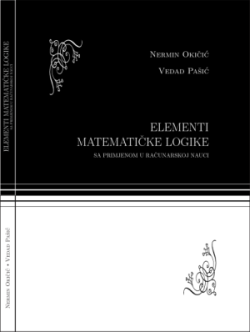
This textbook was written and accepted for use as a university textbook at the University of Tuzla. It is written in Bosnian and intended for native Bosnian speakers, as is the description below. An English translation is unlikely in the near future.
Logika je nauka o
Šta je matematička logika? Da li je matematička logika primjena matematike prilikom logičkih zaključivanja, ili je neka "strožija" primjena logike prilikom matematičkih dokaza? Krajem osamnaestog vijeka Immanuel Kant je izrekao mišljenje da je logika "kompletiran predmet", međutim samo pedeset godina kasnije nova saznanja i rezultati su se pojavili u logici kao rezultat rada Georgea Boola i drugih. Od tada, logika i matematika su počele da se isprepliću do te mjere da uskoro nije bilo moguće povući liniju razdvajanja između njih. Da li je matematika dio logike, ili obratno, ne slažu se ni svi logičari u odgovoru. Intuicionisti smatraju da su matematičke konstrukcije osnova, a logičko rasuđivanje je sekundarno, dok logicisti smatraju da se matematika zasniva na logici to jest, matematika je grana logike. Jedno je sigurno: matematička logika jedna je od matematičkih teorija. Neki njeni veliki dijelovi su: teorija skupova, teorija modela, teorija dokaza, teorija rekurzije itd.
Ono što matematiku izdvaja od drugih disciplina jeste korištenje dokaza kao glavnog alata za određivanje istine. Pri tome se naravno postavlja pitanje "šta je dokaz?". Praktično govoreći, dokaz je bilo koji rezonski argument koga prihvataju i drugi matematičari. Naravno da je preciznija definicija dokaza neophodna kako bismo neki matematički rezon htjeli ili ne htjeli prihvatiti. Ovo predstavlja jedan od osnovnih razloga izučavanja matematičke logike.
Matematička logika je fundamentalna disciplina u računarskoj nauci. Sve one famozne "nule i jedinice" o kojima stalno čujemo u popularnoj kulturi su u stvari stanja promjenljivih u Booleovim algebrama. činjenica da je Booleov rad iz devetnaestog vijeka u osnovi svakog elektroničkog uređaja i računara bi sigurno zapanjila samog Boolea. Takođe, teorija računarstva kao takva je zasnovana na konceptima koje su definisali logičari i matematičari, kao što su Alonzo Church i Alan Turing. Dobro poznavanje osnova matematičke logike je stoga obavezno svakom dobrom inžinjeru ili programeru.
Matematička logika se bavi formalizacijom i analizom vrsta rezonovanja koje koristimo u ostalim dijelovima matematike. Zadatak matematičke logike nije pokušaj bavljenja matematikom per se potpuno formalno, nego izučavanje formalnih logičkih sistema kao matematičkih objekata u njihovoj sopstvenoj zakonitosti, radi dokazivanja činjenica o njima.
Jedan dio problema formalizacije matematičkog rezonovanja je nužno vezan za preciznu specifikaciju jezika u kojem radimo. Govorni jezici su i odviše kompleksni i "živući", podložni stalnim promjenama, te su kao takviteško upotrebljivi u matematici. Za razliku od njih, jezici formalne logike su kao i programski jezici, strogo određeni, jednostavni i fleksibilni, te će jedan od zadataka matematičke logike upravo biti utvrđivanje jezika, kao i naše opismenjavanje u okviru istog.
Formalni logički sistemi zahtjevaju pažljivu specifikaciju dozvoljenih pravila rezonovanja, kao i neke ideje o interpretaciji tvrđenja iskazanih u datom jeziku i utvrđivanju njihovih istinitosti. Upravo veze između interpretacije tvrđenja, istinitosti i rezonovanja su kvantitativno i kvalitativno stvarna vrijednost ove discipline.
Ova knjiga prvenstveno je namjenjena studentima prve godine dodiplomskog studija matematike i u potpunosti prati silabus predmeta "Elementi matematičke logike" na Odsjeku Matematika Prirodno-matematičkog fakulteta Univerziteta u Tuzli, te je namjenjena da bude udžbenik na tom predmetu. Dakako, nadamo se da će ovaj udžbenik biti od interesima i drugima, a pogotovo studentima elektrotehnike i računarstva, budući da se u ovoj knjizi bavimo i primjenama logike u računarskoj nauci.
Ovaj udžbenik je odlukom Senata Univerziteta u Tuzli broj 03-7271-13.1/15 od 09.12.2015. godine odobren za upotrebu u nastavi za potrebe izučavanja nastavnog predmeta "Elementi matematičke logike" na prvom ciklusu studija Prirodno-matematičkog fakulteta Univerziteta u Tuzli. U knjizi su obrađene slijedeće oblasti:
We construct new explicit vacuum solutions of quadratic metric-affine gravity. The approach of metric-affine gravity in using an independent affine connection produces a theory with 10+64 unknowns, which implies admitting torsion and possible nonmetricity. Our spacetimes are generalisations of classical pp-waves, four-dimensional Lorentzian spacetimes which admit a nonvanishing parallel spinor field. We generalize this definition to metric compatible spacetimes with pp-metric and purely axial torsion. It has been suggested that one can interpret that the axial component of torsion as the Hodge dual of the electromagnetic vector potential. We compare these solutions with our previous results and other solutions of classical models describing the interaction of gravitational and neutrino fields.
We consider generalised pp-waves with purely axial torsion, which we previously showed to be new vacuum solutions of quadratic metric-affine gravity. Our analysis shows that classical pp-waves of parallel Ricci curvature should not be viewed on their own. They are a particular representation of a wider class of solutions, namely generalised pp-waves of parallel Ricci curvature. We compare our pp-waves with purely axial torsion to solutions of Einstein-Weyl theory, the classical model describing the interaction of gravitational and massless neutrino fields.
We consider the modulus of noncompact convexity $\Delta_{X,\phi}(\varepsilon)$ associated with the minimalizable measure of noncompactness $\phi$. We present some properties of this modulus, while the main result of this paper is showing that $\Delta_{X,\phi}(\varepsilon)$ is a subhomogenous and continuous function on $[0, (\overline{B}_X))$ for an arbitrary minimalizable measure of compactness $\phi$ in the case of a Banach space X with the Radon-Nikodym property.
We are considering a semilinear singular perturbation reaction-diffusion boundary value problem which contains a small perturbation parameter that acts on the highest order derivative. We construct a difference scheme on an arbitrary nonequidistant mesh using a collocation method and Green's function. We show that the constructed difference scheme has a unique solution and that the scheme is stable. The central result of the paper is $\epsilon$-uniform convergence of almost second order for the discrete approximate solution on a modified Shishkin mesh. We finally provide two numerical examples which illustrate the theoretical results on the uniform accuracy of the discrete problem, as well as the robustness of the method.
We deal with quadratic metric-affine gravity (QMAG), which is an alternative theory of gravity and present a new explicit representation of the field equations of this theory. In our previous work we found new explicit vacuum solutions of QMAG, namely generalised pp-waves of parallel Ricci curvature with purely tensor torsion. Here we do not make any assumptions on the properties of torsion and write down our field equations accordingly. We present a review of research done thus far by several authors in finding new solutions of QMAG and different approaches in generalising pp-waves. We present two conjectures on the new types of solutions of QMAG which the ansatz presented in this paper will hopefully enable us to prove.
We deal with quadratic metric-affine gravity (QMAG), which is an alternative theory of gravity and present a new explicit representation of the field equations of this theory. In our previous work we found new explicit vacuum solutions of QMAG, namely generalised pp-waves of parallel Ricci curvature with purely tensor torsion. Here we do not make any assumptions on the properties of torsion and write down our field equations accordingly. We present a review of research done thus far by several authors in finding new solutions of QMAG and different approaches in generalising pp-waves. We present two conjectures on the new types of solutions of QMAG which the ansatz presented in this paper will hopefully enable us to prove.
This paper considers a non-linear superposition operator on weighted Banach spaces $l_{p,\sigma}, where $\sigma$ is the weight function with the property that: $(\forall n in \mathbb{N}) \sigma(n) \geq 1$. We present the necessary and sufficient conditions of action of the operator from $l_{p,\sigma}$ to $l_{1,\tau}$, $1 \leq p,q \leq \infty$, and also the $\mathcal{L}$-characteristic of the considered action of the operator.
The aim of this paper is to explore in some detail the second order linear ordinary differential equation with real or complex periodic coefficients, also known as the Hill’s equation, with some emphasis on stability and instability intervals and explore two related self-adjoint eigenvalue problems leading to the two final results which enable us to practically solve problems of this type.
I teach a variety of courses at the University of Tuzla, which is an integrated University.
I teach courses at three different Faculties - the Faculty of Mathematics and Science, the Faculty of Electrical Engineering and the
Faculty of Economics.
Below one can find more information of the courses I teach (by clicking the course name You reach the course website, in Bosnian).
Differential calculus of functions of one variable, a first year undergraduate course in Mathematics.
Differential geometry of curves and surfaces, a third year undergraduate course in Mathematics.
Mathematics for economists, a fisrt year undergraduate course in Economics.
Advanced Software Wolfram Mathematica, a postgraduate course in Mathematics.
Mathematical methods in physics, a fourth year undergraduate course in Mathematics.
Non-Euclidean geometries, a fourth year undergraduate course in Mathematics.
Measure and integration, a third and fourth year undergraduate course in Mathematics.
Mathematics II, a fisrt year undergraduate course in Electrical engineering.
Partial differential equations, a fourth year course in Mathematics.
Software Wolfram Mathematica I, a fourth year undergraduate course in Mathematics.
Software Wolfram Mathematica II, a fourth year undergraduate course in Mathematics.
Introduction to Software Wolfram Mathematica, a second year undergraduate course in Mathematics.
Popular mathematics, a third and fourth year course in Mathematics.
Topics in algebra and geometry, a postgraduate course in Mathematics.
Software use in teaching mathematics, a postgraduate course in Mathematics.
Mathematics I, a first year undergraduate course in Mechanical engineering.
Mathematics II, a first year undergraduate course in Physics.
Mathematics IV, an advanced second year undergraduate course in Civil engineering.
Mathematical algorithms, a third year full year undergraduate course in Mathematics.
Using computers in teaching mathematics, a fourth year full year undergraduate course in Mathematics.
Mathematical analysis, a first year full year undergraduate course in Mathematics (assistant).
Mathematical analysis, a second year full year undergraduate course in Mathematics (assistant).
Measure and integration, a third year full year undergraduate course in Mathematics (assistant).
Partial differential and integral equations, a fourth year full year undergraduate course in Mathematics (assistant).
Mathematics I, a fisrst year full year undergraduate course in Electrical engineering (assistant).
Mathematics I, a fisrst year full year undergraduate course in Electrical engineering (assistant).
Here are just a few pictures of me and my family, as well as with colleagues at various scientific conferences and seminars.
This is a totally random collection!
Contact me with Your questions, suggestions and comments.
The preferred mode of communication is email, but feel free to send me a postcard or information about events at Your institutions by snail-mail as well.
I will try to answer You as soon as possible.
Odsjek matematika
Prirodno-matematički Fakultet
Univerzitetska 4
75000 Tuzla
Bosnia and Herzegovina
You can find me at my office located at the Faculty of Science and Mathematics building, room 313.
I am at my office every day, but you may consider writing an email to fix an appointment first.
I also teach at the Faculty of electrical engineering and the Faculty of Economics.
Depending on the semester I can also be found there.